Characteristics and prevention of pelargonium diseases
Pelargonium belongs to the category of perennial plants. It is characterized by the presence of straight or creeping, as well as sufficiently branched stems. The originality of this plant is given by pollen-dissected or pollen leaves. The flowers of this plant are collected in multi-flowered or low-flowered inflorescences. They can have a variety of colors: white, yellow, pink.
This plant is light-loving and rather unpretentious. Despite this, it can succumb to various diseases. The most common ones are leaf blight, bacterial rot, root or stem rot, root or stem late blight, verticillium wilt, rust, Alternaria, gray rot, etc.
Content:
- Features of the development of gray rot of pelargonium
- The appearance of bacterial rot
- Features of the development of root or stem rot
- Features of the fight against rust of pelargonium
- Features of late blight development
- Features of the fight against verticellosis wilting
Features of the development of gray rot of pelargonium
With gray rot, spots appear on pelargonium that have a brown color. The disease most strongly affects the lower leaves, which are located close to the soil. The flowers of some varieties of pelargonium can be characterized by the presence of spotting. If the humidity in the room is increased, then these spots will be covered with a bloom, which has a gray color.
This disease can persist in the soil for several years and, with an increase in air humidity, appear on the leaves and stems of the plant.
Reasons for the appearance of gray rot:
- Gray rot can be transmitted through the air, soil, or by cuttings of an infected plant.
- Most often, this disease appears when the humidity of the air and soil rises.
- Poor ventilation and excessive watering can also cause this condition.
As a prevention of gray rot, it is necessary to strictly comply with all the rules of agricultural technology... When this disease appears on the leaves of pelargonium, it is imperative to treat it with fungicides, and also to remove the affected areas of the plant. Before rooting the cuttings, they must be kept in a fungicide solution for some time.
The appearance of bacterial rot
Bacterial rot of pelargonium is characterized by the appearance of small spots on the leaves of this plant, which increase over time and become quite watery. With the development of this disease, the spots begin to shine through, and a chlorotic areola appears around them. It is quite simple to notice this disease, since the spots are very clearly visible from both sides of the leaf. If the leaves are severely affected by this disease, they may first turn yellow, and then wither and dry out.
Feature of bacterial rot:
- Leaves do not fly off after drying.
- In this disease, not only the leaves of pelargonium are affected, but also its stems. Spots appear on them in the form of rot, which has a characteristic gray color.
- Such manifestations of the disease can most often be seen on cuttings. The virus of this disease can persist until the plant is completely decomposed.
- Most often, pelargonium carries this disease in the warm season with increased and prolonged humidity in the air or soil.
In order not to spread this disease it is necessary to take cuttings exclusively from healthy plants. In this case, it is imperative to use a clean and specially processed tool.
Also, in order to prevent bacterial rot, it is necessary to maintain optimal humidity in the room. Pelargonium needs feed regularly, which include potassium. When the first signs of the disease appear, pelargonium must be immediately treated with fungicides.
Features of the development of root or stem rot
Root rot is most often seen on the roots as well as on the root collar. It is quite simple to notice it - the plant begins to wilt very quickly, as a result of which it dies. Very dark and depressed spots appear on the root collar or roots, which can grow quite quickly. On the damaged areas of this plant, the mycelium of the fungus very often appears, which is characterized by a gray-white color.
Root or stem rot most often develops with insufficient lighting, as well as with dense planting of this plant.
Also, this disease can develop with excessive soil moisture and very high temperatures. The development of this disease can be caused by air changes and excess nitrogen in the soil.
In order to avoid this disease, it is necessary to choose a very well aerated substrate when landing of pelargonium... Also, this plant must be planted quite rarely and ensure good ventilation of the room in which it is located. An important enough point in the prevention of root rot is the observance of agricultural technology. When the first signs of rot appear, it is imperative to stop watering. A diseased plant must be treated with fungicides.
Features of the fight against rust pelargonium
Description of the disease:
- With the rust of pelargonium, first of all, spots appear on the upper side of the leaf plate, which have a yellowish color. These spots are characterized by the presence of clear boundaries.
- Pustules appear under the spots on the underside of the leaf, which are brown in color.
- Often these pustules are concentric.
- With the development of this disease, the foliage can dry out and then fly around.
These diseases can only be transmitted through infected plants, therefore graft sick pelargonium is strictly prohibited. Rust can also be airborne or waterborne. This disease multiplies very quickly at high temperatures and high levels of humidity in the room.
For the reproduction of pelargonium, it is necessary to choose only healthy plants, which will limit the possibility of rust infestation.
When the first signs of this disease appear, it is imperative to reduce the humidity in the room. It is also necessary to reduce watering of this plant and stop spraying it. When the first signs of the disease appear, it is necessary to remove the affected leaves, and also treat the plant with fungicides.
Features of late blight development
With the appearance of late blight, pelargonium is very quickly capable of rotting and withering. This disease appears initially on the lower part of the depressed rot spots. With the development of this disease, the spots are able to spread up the plant. In the event that the conditions for the development of the disease are favorable, then a micelle will appear on the depressed spots, which is characterized by a gray-white color. The causative agents of this disease can persist in the soil.
The cause of late blight can be:
- Too dense planting of pelargonium, as well as very poor lighting in the room.
- Also, this disease can occur as a result of an excess of fertilizer or too high temperatures of flower maintenance.
- With sudden changes in temperature, late blight develops most often.
In order to prevent this disease, it is necessary to strictly adhere to the rules of agricultural technology. During a pelargonium transplant, you need choose only high-quality and loose substrates... Good ventilation of the room in which the pelargonium is located will also help to avoid this disease. At the first manifestations of signs of this disease, it is necessary to urgently stop watering the plant, and also treat it with fungicides.
Features of the fight against verticellosis wilting
Verticellosis wilt of this plant most often appears on the lower leaves of pelargonium. It is characterized by yellowing of individual areas of the leaf. As the disease develops, the pelargonium leaf turns yellow completely and withers. In this case, the leaf does not fall off, but the yellowness passes to the upper leaves. When the pelargonium shoot is cut, the suggestive tissues will be dark.
This plant lends itself to verticelle wilt when planting a plant in a fairly light soil, as well as when growing this plant for a long time in one place. The reason for the development of this disease is very often warm weather.
To prevent this disease, it is necessary to remove the remains of the plant in time, as well as transplant and root it in clean soils.
To avoid this disease, it is also necessary to ensure timely watering the plant... In order to prevent, as well as when the first signs of the disease appear, it is necessary to treat pelargonium with fungicides.
Pelargonium is susceptible to diseases only with improper care. If this plant is provided with the required temperature, lighting and humidity, then it will very rarely get sick.
More information can be found in the video.



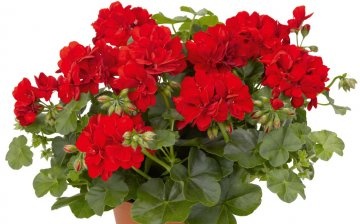
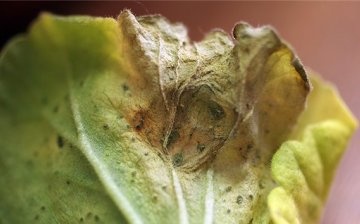
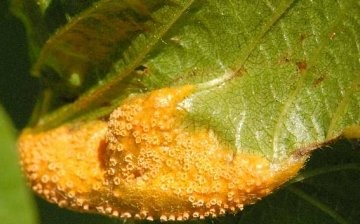
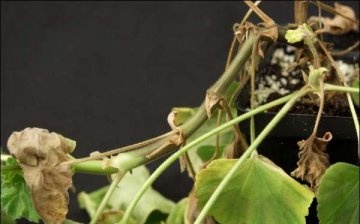
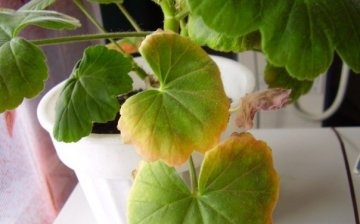
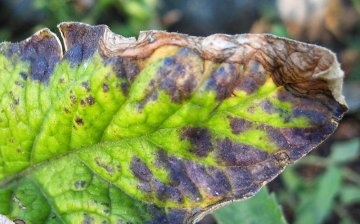
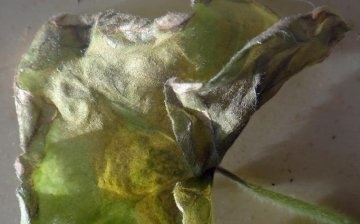







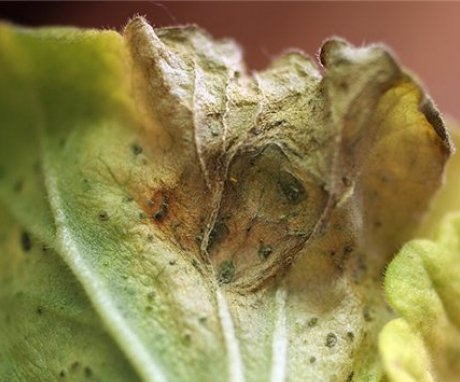
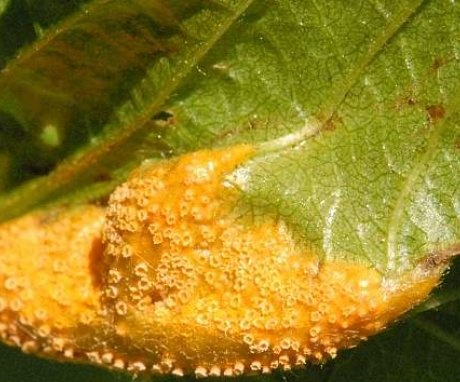

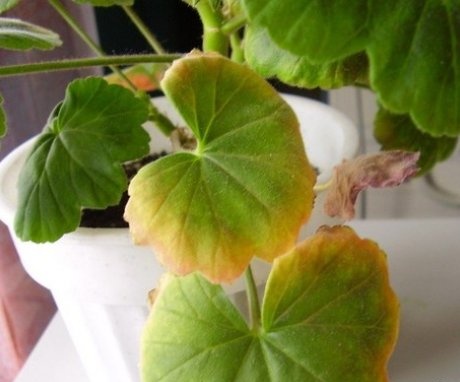
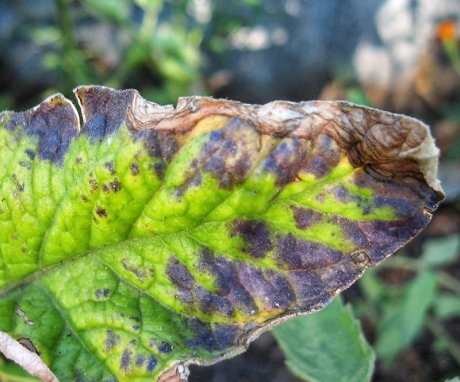
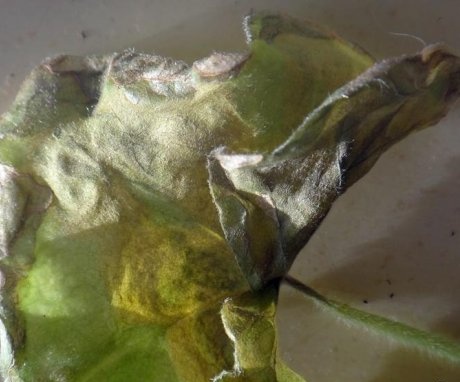
It would be nice to add a couple of names of products that can save the plant from rot and other unpleasant things. Here at my friend this rot has already tortured plants, we do not know what to do.